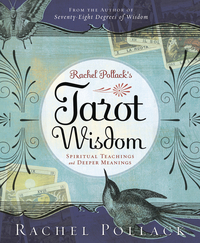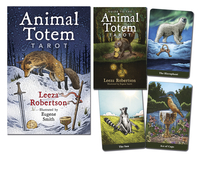Llewellyn Publications's Blog, page 43
September 26, 2017
Acts of God
Readers, please enjoy this guest blog post by Jean-Louis de Biasi, author of Secrets and Practices of the Freemasons, The Divine Arcana of the Aurum Solis, and Rediscover the Magick of the Gods and Goddesses, and the forthcoming Esoteric Freemasonry. Jean-Louis is also Lifetime Grand Master of the Ordo Aurum Solis and Kabbalistic Order of the Rose-Cross.
 I have recently been fascinated by a paradox apparently ignored by many people. As you may know, the east coast of the United States has been strongly tested by hurricanes, flooding, and more. Other parts of the world have also experienced disasters of many kinds. Of course, these events have existed for centuries, even if today, factors we all know increase the instability of the climate.
I have recently been fascinated by a paradox apparently ignored by many people. As you may know, the east coast of the United States has been strongly tested by hurricanes, flooding, and more. Other parts of the world have also experienced disasters of many kinds. Of course, these events have existed for centuries, even if today, factors we all know increase the instability of the climate.
In legal usage throughout the English–speaking world, “acts of God” are things we cannot prevent, which include any naturally occurring catastrophe (such as earthquakes, tornadoes, erupting volcanoes, hail, lightning, windstorms, and of course, hurricanes). In these cases, no human is seen as responsible.
Starting from that, what shocks me is the singular used in this expression: “God.” Usually this singular is used in the Judeo-Christian religion to define the God worshiped as almighty and all love. So why refer to catastrophic events as “acts of God?” Of course, the Bible gives countless examples of God using his power, sometimes acting directly, sometimes allowing Satan to act for him. We can read such an episode in the book of Job.
I don’t want, in this blog, to start a theological debate about the rationale regarding killing or torturing people while saying that they are loved. But why not use the words “Acts of God” for blessings received in our life instead of just times of destruction? As a Hermetist, I want to think about divinities as benevolent and eager to give us the best in our lives.
Polytheism is a different story. As there are multiple deities, we can easily understand their anger, disputes, and jealousy. Sometimes humans are in the middle of their fight and there is collateral damage. Fate in the Pagan world is a complicated matter. Most of the time, it is seen as unavoidable. The three Moirai, Clotho, Lachesis, and Atropos, oversee our destiny and we can do little regarding their management of our lives.
However, in the case of this common expression, it might be best to talk about an “act of Gods,” using the plural. As I stated before, Monotheism is, according to its principles, the expression of a unique benevolent God.
It is fascinating how a simple expression can be so problematic on the theological level. Centuries ago, the one who created this expression could have been declared a heretic with all the usual consequences.
Be careful with the words you use.
Our thanks to Jean-Louis for his guest post! Visit Jean-Louis de Biasi’s author page for more information, including articles and his books.
September 20, 2017
At Omega with Rachel Pollack
This summer, the Omega Institute offered a Masters of Tarot weekend workshop featuring me, Theresa Reed, Sasha Graham, Mary Greer, and Rachel Pollack. One of the signs of a good teacher is that they are always investigating and exploring. Even if you’ve had classes with them before or read their books, they always have something new to offer…or perhaps a new approach to an old favorite topic. It was a wonderful weekend for both us teachers and for the students.
Rachel is well-known for her books Tarot Wisdom and The New Tarot Handbook. She continued her investigation into using tarot for what she calls wisdom readings and also blended in a new idea: instead of asking big wisdom questions about the world, ask big, wisdom questions about who you are as a reader.
Rachel’s reading style is a little different than most in that she doesn’t always lay all the cards out in a spread and read them in relation to each other but rather asks a question and pulls a card to answer the question.
Of course I cannot reproduce Rachel’s workshop here, but I can share some ideas that might inspire you to create some of your own practices or techniques. I would also encourage you to lay all the cards out in a spread so that you can see any interesting relationships that are present between the cards. I find that always helps integrate a reading and provides much more clarity and nuance.
1. What is your superpower as a tarot reader?
2. How can you make the most of your superpower?
3. What is your weakness?
4. How can you use your superpower to combat your weakness?
You can change “weakness” to anything you want to change, such as fear, limitation, stagnation, etc. And don’t feel limited to one superpower. The word “superpower” is used metaphorically and we all have many strengths and abilities that can serve us in surprising ways.
Learn more about wisdom readings in Rachel Pollack’s Tarot Wisdom.

September 18, 2017
Shapeshifters: Morphing Monsters and Fantastic Beasts
Readers, please enjoy this guest blog post by Nick Redfern, author of Chupacabra Road Trip, Nessie, and the new Shapeshifters.
 Make mention of the word “shapeshifter” and, in all likelihood, it will bring to mind the image of the world’s most well-known shapeshifter of all time: the werewolf. It’s a beast that is famous in history, folklore, mythology, and popular culture. Centuries ago, werewolves were talked about, in hushed tones, around campfires in the woods. Today, they entertain us on the big-screen: Underworld, Dog Soldiers, and An American Werewolf in London are just a few of the hit-movies of the wolfman-type variety. There are, however, far more shapeshifters than just werewolves.
Make mention of the word “shapeshifter” and, in all likelihood, it will bring to mind the image of the world’s most well-known shapeshifter of all time: the werewolf. It’s a beast that is famous in history, folklore, mythology, and popular culture. Centuries ago, werewolves were talked about, in hushed tones, around campfires in the woods. Today, they entertain us on the big-screen: Underworld, Dog Soldiers, and An American Werewolf in London are just a few of the hit-movies of the wolfman-type variety. There are, however, far more shapeshifters than just werewolves.
Centuries before the strange creatures that lurk in the depths of Loch Ness, Scotland became known as the Nessies, they were termed Kelpies. They were violent monsters that would lurk near the shores of the massive body of water in the form of a gorgeous maiden, or of a large black horse. The disguised monsters would drag their victims into the dark depths, stealing their souls as they did so.
In the United States, there is the much-feared Skinwalker, a supernatural entity in Native American lore that is both dangerous and deadly. It, too, is said to have the paranormal ability to take on countless forms, including that of a huge wolf. The US is also home to the Kushtaka, roughly equivalent to “Land Otter Man,” which is highly appropriate, taking into consideration that this is precisely how the Kushtaka is described. It is important, however, to note that the creature is not, literally, half-human and half-otter. Rather, it can take on both forms and lurks in the forests of Alaska. But things don’t end there: the Kushtaka can also manifest in the shapes of giant wolves (very often bipedal, upright wolves) and also large, hairy humanoids not at all unlike Bigfoot.
Fairies, goblins, and pixies all have one thing in common: the ability to entrance people by changing into multiple forms. In one case from 19th century England, a fairy was said to have taken on the form of a hedgehog. In 18th century Ireland, one of the “little people” appeared before a shocked eyewitness in the woods, only to turn itself into a toad and leap into a nearby stream.
UFO witnesses claim to have encountered human-looking aliens that had the ability to turn themselves into ethereal balls of light. The early-1950s encounters of a man named Orfeo Angeluicci, who claimed several such experiences in Los Angeles, California, is a perfect example.
Shapeshifters are not the things of mythology. The startling fact is that they are all too real.
Our thanks to Nick for his guest post! For more from Nick Redfern, read his article, “Shapeshifters: Werewolves, Tricksters, Monsters, and More.”
The Great Adventure from Birth to Death
Readers, please enjoy this guest blog post by Patt Lind-Kyle, author of the new Embracing the End of Life.
 It probably took around nine months for you to be born here on earth. As you were growing in your mother’s womb you were not terribly aware of what was happening in your parents’ life. Well, as you can imagine, they were making important preparations before your arrival. Your parents were building a wonderful nest for you with toys, clothes, furniture, and more. Sometimes your mother had to wait over the nine months, or perhaps popped out early. She had to become very patient and adaptable for your intended arrival time.
It probably took around nine months for you to be born here on earth. As you were growing in your mother’s womb you were not terribly aware of what was happening in your parents’ life. Well, as you can imagine, they were making important preparations before your arrival. Your parents were building a wonderful nest for you with toys, clothes, furniture, and more. Sometimes your mother had to wait over the nine months, or perhaps popped out early. She had to become very patient and adaptable for your intended arrival time.
Very similar to your birth is another major life event: your death. In contrast to building a nest at birth, at the time of death you are letting go of the nest of things that you have collected over the years. Like birth, death also has its own time as to when it arrives.
Both of these transitions cannot be controlled. Your pregnant mother may have felt that her body had a mind of its own as you grew in the womb. The dying person may similarly experience the dying of the body as something they cannot control.
As the time came for your birth, your mother may have worried about the process of giving birth: “Will it hurt? Will I like you when you arrive? What will you be like?” Also your mother likely worried, “Will I have supportive and nurturing people to help me?” She may have had feelings of fear and growing anxiety. In the same reality, the dying person, as they approach death, may have the same anxiety with many of the same questions. The truth is that the body knows how to give birth. If interventions are kept to a minimum, the process of birth has its own rhythm. If there are too many interventions, the birth process can become very difficult. In the same way, too many medical interventions can prolong the dying process and interrupt the natural inner experience of the dying person.
And just as with the birthing process, during the dying process fear and confusion by family and caregivers about what is happening can not only interfere with the process of the person dying, but can also create uncertainty and inappropriate actions from the family and caregivers.
Surrender, patience, and letting go are needed in both birthing and dying. In the end, as you go through the positive nature of this transition called dying, no one will be able to change the way you feel or how to deal with your fear or uncertainty except yourself. Learning to face your death without fear is like learning to be separated from your mother at birth and facing the fear of a confusing world.
Just as we have the gift of birth, we have the gift of our death. Both birth and death, and what happens in between, is what we call our life. Learning to accept all of it, including death, is the great adventure. Kahil Gibran, in his book The Prophet, said, “You would know the secret of death, but how shall you find it unless you see it in the heart of life.”
Our thanks to Patt for her guest post! For more from Patt Lind-Kyle, read her article, “5 Ways to Ease the Fear of Death.”
September 6, 2017
At Omega with Sasha Graham
This summer, the Omega Institute offered a Masters of Tarot weekend workshop featuring me, Theresa Reed, Sasha Graham, Mary Greer, and Rachel Pollack. One of the signs of a good teacher is that they are always investigating and exploring. Even if you’ve had classes with them before or read their books, they always have something new to offer…or perhaps a new approach to an old favorite topic. It was a wonderful weekend for both us teachers and for the students.
Sasha is well-known for her books Tarot Diva, 365 Tarot Spells, and 365 Tarot Spreads. She is working on another book that we are very excited about and will be able to tell you about in a few months. In addition to her very practical and easy to apply to life style of work, Sasha has been doing some great deeper, inner, creative work…the kind of stuff that takes tarot to a new level.
At Omega, she taught a technique called Fairy Tale Readings. While I cannot share her exact presentation here, I can tell you something about it so that you might be inspired to explore the interplay between stories that resonate with you and tarot.
Start with a story that has meant something to you. Think about three things in the story…items, characters, scenes…that feel symbolic to you and write them down. Tap into what you feel they represent and write those down. Finally write down how you think each of those ideas expressed themselves in your life. Assess whether you think the ideas are expressed in your life in a positive manner or a negative way. Pull a card for each item to determine how to express that energy in an even better way or how to turn it from a negative expression to a positive one.
Activities like these, combining other important symbol systems (even if you don’t realize they are symbols) with tarot, can really open up areas of personal reflection and exploration. The steps Sasha led us through at Omega were much longer and more detailed and included a guided visualization. Almost everyone was moved, sometimes beyond words, by the end of the workshop.
You can get a taste of Sasha’s power and poetic approach to tarot in any of her works, but I particularly love her guided meditation for each of the elements found in Tarot Diva.

September 4, 2017
It’s Never Too Late To Learn Your Own Lessons
Readers, please enjoy this guest blog post by Elana Zaiman, author of the new Forever Letter.
 It is a weekday evening. Our family of three—my husband, Seth, me, and our son Gabe—just finished dinner. On some evenings, especially weekdays, dinner is often quick, each of us racing off to do our own thing. But this evening is different. We have moved from the table to the couch and we are sitting around talking about college, SATs, possible majors. You see, Gabe is a senior in high school and he will soon be applying to college. Tonight, he’s in a talkative mood, chatty even. His cell phone sits on the counter, not on his person, and he’s content to let it rest there, and not tend to it even when it vibrates.
It is a weekday evening. Our family of three—my husband, Seth, me, and our son Gabe—just finished dinner. On some evenings, especially weekdays, dinner is often quick, each of us racing off to do our own thing. But this evening is different. We have moved from the table to the couch and we are sitting around talking about college, SATs, possible majors. You see, Gabe is a senior in high school and he will soon be applying to college. Tonight, he’s in a talkative mood, chatty even. His cell phone sits on the counter, not on his person, and he’s content to let it rest there, and not tend to it even when it vibrates.
Gabe is talking about specific universities in which he’s interested. He has decided, after doing more exploration online, that though he has his mind and heart set on one of the three colleges he’s visited so far, he could really go to any number of colleges, and he’d be fine. He’d find a major, make himself known, and find his people. I know this. It’s nice to see that he knows this, too.
He talks about areas of study in which he’s interested: political science, history, medicine, media, global health care. He’s enthusiastic as he discusses all the options. For the moment, he’s not anxious. He’s looking forward.
For many high school juniors and seniors as they begin to think about college, anxiety settles in like an unwanted guest. These sixteen- and seventeen-year-olds worry if they have the grades and SAT or ACT scores to get into a good college. And then there’s the dreaded comparisons to their friends. “This friend will be applying for a basketball scholarship. He’s got something I don’t have. What if no college wants me?”
So this particular weekday evening—free from anxiety and full of enthusiasm—is welcome.
Gabe then mentions fraternities, and no sooner does he mention them than does he say, “I don’t want to talk about it.”
I push. “Sometimes you suddenly don’t want to talk about something after you mention it. Why now?”
He says, “Because I can decide what I want to do when I get to college and you guys can’t make that decision for me.” He says that he may decide to join a fraternity though he knows we have concerns, and though he knows our concerns stem from wanting the best for him. He’s reminding us that his life is his to live, not ours to live for him.
Both Seth and I acknowledge the truth of his words. We acknowledge that he can make his own decisions.
I ask him how we can better approach him so he feels supported. Seth offers this idea: We try not to state opinions as facts. We try to ask more open-ended questions. I ask Gabe how he feels about this. He’s in. I thank Gabe for sharing his thoughts because by doing so he helps us to be better parents.
The next day, when Gabe and I are in the kitchen having breakfast, I thank him again for our talk. I tell him that sometimes I find myself being critical of things, and that as I learn more about myself, I believe this has to do more with my past experiences than with his future endeavors.
The point is this: In my new book, The Forever Letter, I write about sharing our values, wisdom, appreciation, guidance, love, and forgiveness with the people who matter to us most. I remind readers that we must be careful not to command with our words or with our pen. Sure, we can communicate what we hold dear, but we must take care to do so in a way that respects the person to whom we’re writing and encourages him or her to live his or her own life. Clearly, this is one of my own lessons that I need to relearn.
Our thanks to Elana for her guest post! For more from Elana Zaiman, read her article, “3 Reasons to Write a Forever Letter.”
August 29, 2017
24 Carat (Carrot!) Coloring Charm
Readers, please enjoy this guest blog post by Natalie Zaman and Wendy Martin, co-authors of the new Color and Conjure.
Have you ever tried coloring as a magical working? It’s a wonderfully simple way to focus your energies. Give it a whirl with this spell, crafted specifically for the impending fall equinox ♥.
A Twenty Four Carat (Carrot) Coloring Charm
Clearly, there are NOT 24 carrots to color in this spell (although it might be fun). There are only three carrots, but you can still have a 24-carat intention—remember, in magic, intent is (almost!) everything. (And 24 is divisible by three after all. 3 divided by 24 is 8—another magical number that represents, among other things, the Wheel of the Year.)
We’re coming upon the Autumnal Equinox, time to celebrate the harvest and keep an eye on the future: Winter is coming. And who’s got your back for those long, cold nights? St. Michael, of course, whose feast day is well placed on September 29th just a few days after the equinox. A little known Michaelmas/Equinox tradition in the British Isles is the harvesting of wild carrots (dug up with a triangular spade, the same shape as Michael’s shield). Bundled in sets of three and tied with a red ribbon, they were given as talismans for abundance in the coming year.
Download the coloring page, print it out, and recite the words of the spell as you color it in shades of creative orange and abundant green to bring plenty, clarity, and justice into your life—aspects protected by St. Michael, and well needed in the current social/political/economic climate we’re living in at the moment!
May justice by mine
May my sight be clear
May my cupboards be filled
Throughout the year!
Keep the spell where you can see it, and when you do, say the words aloud or to yourself. Watch for signs of Michael’s presence!
Now, if you’re feeling extra Crafty, you can take this coloring page to a whole ‘nother level! You’ll need…
A pair of scissors,
Craft glue
A recycled cereal box
A length of red ribbon
Some carrot-colored glitters (or crystals, sequins, or other embellishments)
Print out two coloring pages.
Color the carrots and cut them out. You should have six carrots total.
Glue three of the carrots to the cereal box and cut them out—this should reinforce them and make them nice and sturdy.
Glue the second set of carrots to the blank side of the cereal box so that your carrots are the same on both sides.
Punch a hole in the top of each carrot, then decorate them with all the glitter, crystals and/or any other embellishments of your choice. This bling is more than fun. Glitter is fabulous for many reasons, one being that it will attract light to (and reflect it from) to your charm.
Allow all the glue to dry thoroughly before threading the ribbon through the holes.
Bless your charm with the spell, then hang it where you’ll see it every day. When you do—recite the spell and watch for signs of Michael and his blessings to enter your life.


Natalie Zaman
Wendy Martin
Our thanks to Natalie and Wendy for their guest post! Looking for more? Check out more on Color and Conjure and read Natalie Zaman’s article, “8 Tips For Turning ANY Coloring Page Into Magical Ritual.”
August 23, 2017
Honoring Sorrow with the 3 of Swords
Animal Totem Tarot
Leeza Robertson, art by Eugene Smith

To see more, click HERE.

Three of Swords
It is all too easy to spin even “negative” cards in a positive way. We’ve grown accustomed to shunning anything that might be considered negative, but this illusion that all can and should always be sunshine and rainbows comes at a cost. If we do not honor our sorrow, we forsake an important and necessary part of the human experience. Leeza Robertson shares a message that she received from Elephant while working on this powerful deck.
A message from the Elephant
“There is something to be said for taking a moment and honoring what hurts. Pain itself is not the problem; not knowing what to do with that pain, however, is where you can get into trouble. Loss is a very important part of this physical world. You cannot have new life without death, nor can you have gain without loss. So in this still moment, bow your head and honor all that was, is, and is on its way.”
August 21, 2017
Your Internal Messaging System
Readers, please enjoy this guest blog post by Andrea Mathews, author of the new Letting Go of Good.
 Most of us have been taught that we must seek guidance from wise instructors, such as parents, friends, significant others, or spiritual leaders. Some look for signs from the external world to tell them what to do. What we don’t as commonly know is that we have our own internal messaging system that can guide and protect us as needed on a daily, even moment-by-moment basis. The components of this system are described in detail in my book, Letting Go of Good: Dispel the Myth of Goodness to Find Your Genuine Self.
Most of us have been taught that we must seek guidance from wise instructors, such as parents, friends, significant others, or spiritual leaders. Some look for signs from the external world to tell them what to do. What we don’t as commonly know is that we have our own internal messaging system that can guide and protect us as needed on a daily, even moment-by-moment basis. The components of this system are described in detail in my book, Letting Go of Good: Dispel the Myth of Goodness to Find Your Genuine Self.
But for a brief overview of these components, the internal messaging system includes emotions, desires, intuitions, and discernment. Of course, there’s been a lot written lately about trusting one’s intuition, but it is often difficult for us to distinguish between intuition and other things, like emotion or desire. In fact, these distinctions are hard to make, generally speaking, because we don’t have an intimate relationship with the interiority of the genuine Self. Letting Go of Good: Dispel the Myth of Goodness to Find Your Genuine Self will inform the reader as to how to make these distinctions and build that relationship.
Further, we have commonly been either covertly or overtly taught not to trust our emotions. They are fleeting, they are based in ego, and many of them are labeled as “negative.” But actually they are messages to us, for us, and about us, from our own souls. They are meant to tell us something very important about ourselves and/or our lives.
For example, anger is commonly thought to be a “negative” emotion with “negative” consequences. While it is true that we can misuse anger, when it is used as a component of the internal messaging system, it gives us information. One of its most common messages of anger is, “I am here, I am real, and I matter.” It is trying to tell us that there is something happening about which we need to step up and take care of ourselves. When we use that anger to clarify the problem and decide how to best take care of ourselves (that is, as opposed to trying to get someone else to behave “correctly”) then we have followed our inner guidance.
Even in the event that our emotions do not accurately reflect a current event, they can lead us inward to find deep unresolved issues that need our attention. They are meant to facilitate our deep, intimate relationship with the authentic Self—as are our desires, our discernments, and our intuitions.
The worst thing that we can do with these internal guides is repress or suppress them. When we do that, not only do we miss the message, but we miss the opportunity to become more intimately acquainted with the Self. It is the Self that offers us the greatest potential to create an intimate relationship with the spiritual world. In fact, it is impossible to have a genuine relationship with any aspect of the universal divine, without a deep and abiding relationship with the authentic Self.
Our thanks to Andrea for her guest post! For more from Andrea Mathews, read her article, “Identity or Self?.”
August 9, 2017
Mystic Faerie Justice
Mystic Faerie Tarot
Linda Ravenscroft, text by Barbara Moore
[image error]
To see more, click HERE.
[image error]
Justice
The fae of Justice lives in a mistletoe bush. While she looks very demure and gentle, she represents an incredibly powerful magic that is tied deeply to the core of the universe.
Her stone perch indicates her roots to the earth. However, she sits on a cushion decorated with spirals, indicated the cycles life…life as lived by people. The power she wields is a direct result of our individual actions. A human name for her power is karma, the justice of the universe. This is the most perfect and poetic of all justice systems. She holds the scales that weird our actions and the sword that delivers our reward, whatever it may be. She is blindfolded, so she cannot help or hurt us. She can only mete out what we have earned.
Out of all the Mystic Faerie cards, this one speaks most clearly and succinctly the faerie’s main
Message for us humans: what you do today directly creates what you will experience tomorrow. It is a message that we have heard many times, in many different ways. Our religious and spiritual systems express it, our system attempts to impose it, and even our everyday sayings remind us of (you’ve made your bed, now you have to sleep in it).
This fae wishes you to understand your power and your responsibility. If you are wondering why you are facing a situation, look to your past actions. If you can see how you brought yourself to this place, you can perhaps find a way to balance your karma. If you are facing a decision of how to behave in a situation, consider the future ramifications. Choose your actions wisely, and carefully make a bed you will be happy to sleep in.
Llewellyn Publications's Blog
- Llewellyn Publications's profile
- 241 followers



